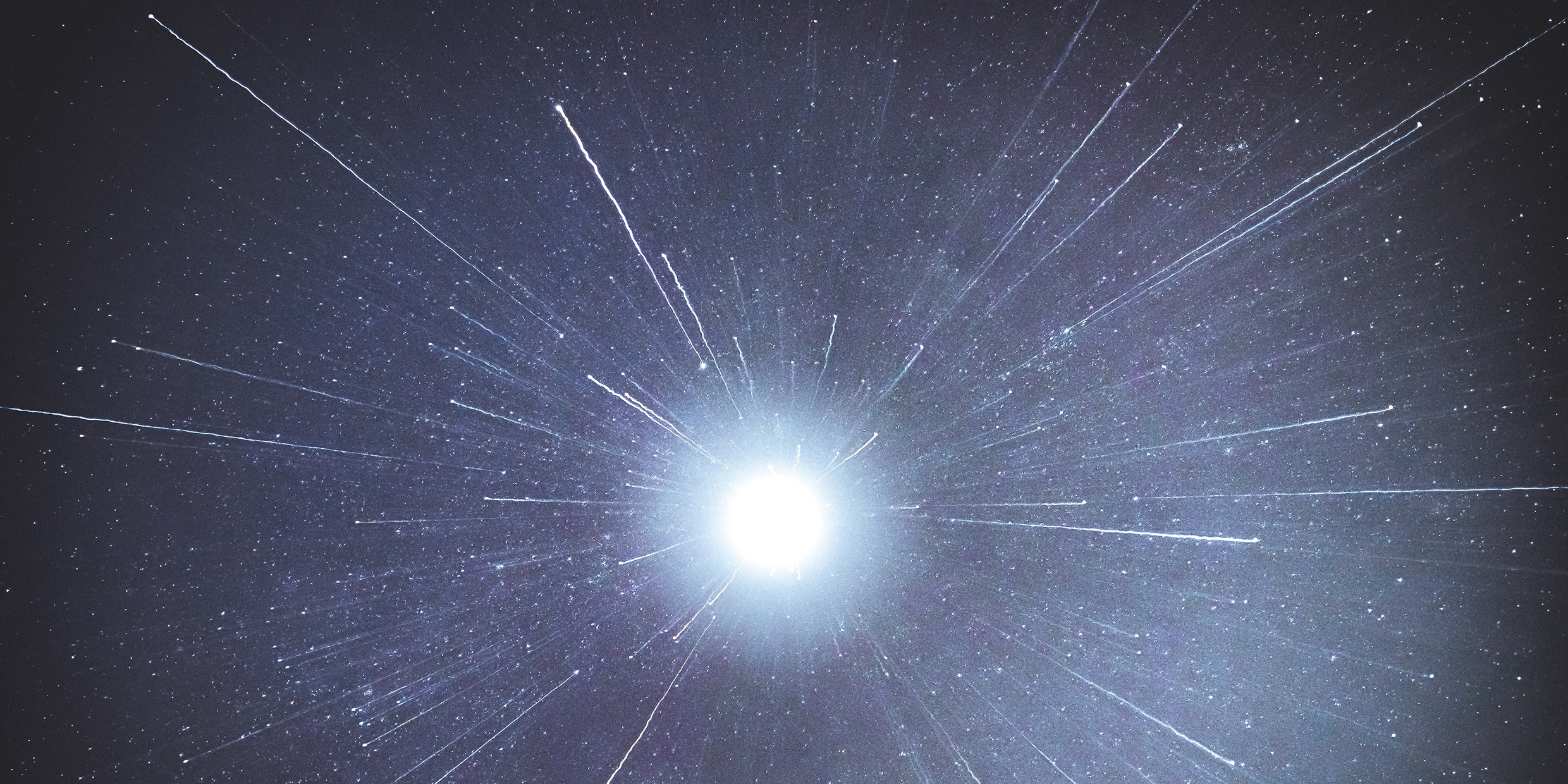Originally published 11 November 1985
The neutrino is the spook of the world of subatomic particles. It has no electric charge, and possibly no mass. It is a mere whiff of a particle, a whisper of matter, a sweet nothing. The neutrino is only barely lodged in the realm of existence.
Because they come so close to having no properties at all, neutrinos interact with more substantial kinds of matter only with extreme reluctance.
A beam of neutrinos projected at a steel wall would zip through unimpeded.
Neutrinos produced by nuclear reactions at the center of the sun pass up though half a million miles of the sun’s bulk with negligible decrease. As you read this, neutrinos from the sun are raining down on your head, billions of them every second; they pass through your body as if it were not there. If you are reading this at night, solar neutrinos are entering your body through the soles of your feet, having passed up through the Earth as readily as sunlight through glass.
The existence of neutrinos was proposed by Wolfgang Pauli in 1930 as a way of explaining bits of missing energy and momentum in certain nuclear reactions, but it was 25 years before anyone succeeded in observing one of the elusive particles. The ghostly aloofness of neutrinos makes them devilishly difficult to snare and study.
Neutrinos have remained the gray eminences of nuclear physics — influential, but virtually invisible.
They are out there
In recent months, a spate of papers in the scientific journals have again brought the shy neutrino to center stage. The question is this: Do neutrinos have mass, as certain speculative theories of contemporary physics suggest they might? The answer to that question may explain the existence of galaxies. It may also determine the fate of the universe.
Physicists are confident that the universe teems with a myriad of neutrinos that were produced in the first few seconds of the Big Bang. Because of their elusive quality, those primeval neutrinos remain invisible. But they are there, in prodigious numbers, and if neutrinos have a mass, even a small one, their combined gravity should dominate the universe.
And now the story becomes interesting, because in the last decade astronomers have discovered that only about one-tenth of the mass of the universe is visible to us as luminous stars and galaxies. The dark matter that makes up the other nine-tenths of the “stuff” of the universe can be deduced by its gravitational influence on the motions of visible objects. We know it is there because it pulls and shapes. But the nature of the dark matter is an unsolved riddle.
If neutrinos have mass, they would be a prime candidate for the dark matter of the universe. Knowing the nature and quantity of the dark matter would help us understand how the galaxies formed from the sea of atoms that flowed from the creation. The quantity of dark matter will also determine whether the universe expands forever, or collapses back upon itself to recreate the fireball of the Big Bang.
The question of mass
With such fundamental questions at stake, experimentalists have been eager to ascertain the neutrino’s mass. Earlier this year [1985], J. J. Simpson, of the University of Guelph in Canada, reported an experiment that suggested a mass for the neutrino about one-thirtieth that of the electron, much heavier that had been previously supposed. Simpson’s work caused a flurry of excitement. Such a heavy neutrino would have profound implications for cosmology.
But W. C. Haxton, from the University of Washington and Los Alamos, has recently argued that Simpson’s results might be explained without ascribing mass to the neutrino.
Physicists T. Padmanabhan and M. M. Vasanthl have shown that a heavy neutrino such as Simpson describes would be intrinsically unstable, and that the products of neutrino disintegration in the early universe would have disrupted the gravitational clumping of matter that caused the galaxies to form.
Finally, a group of physicists at Princeton University have reported a experiment that shows no evidence for Simpson’s heavy neutrino.
All of this leaves the matter quite up in the air.
The current understanding among physicists is that neutrinos do have mass, but an infinitesimally small mass — less than one-millionth of an electron. As such, their combined mass in the universe is much less than what is expected to be a candidate for the still elusive “dark matter.” ‑Ed.



